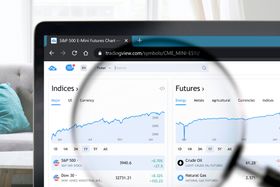Which ROI percentage is normal for stock/retirement funds?
Asked 4 years ago
Is annual ROI between 5% and 10% normal for stocks/retirement funds? Is there any way to do better, other than doing risky day trading?
Filip Dimkovski
Saturday, April 24, 2021
An estimated annual rate of return of 10% or above is considered quite good ROI for long-term capital market investments by most investors. Bear in mind though, that many traders do a lot better than this. There will be years of lower returns, perhaps even negative results. Other years will generate slightly better returns.
I’ve even seen people have anything between 5% and 12% for average annual returns over a lifetime of investing. In general, I think it's best to have an average annual return of 6%, especially as a beginner, and keep in mind that you will have ups and downs throughout the years.
Andia Rispah Igobwa
Monday, May 10, 2021
The inflation-adjusted rate return for S&P 500 has been between 5% and 8% over a few selected 30-year periods. Therefore using the ROI of 6% or 7% is a good bet for your retirement planning.
If you’re estimating how much ROI on your stock-market investment over time, then we recommend an annual return of 6%, knowing that you’ll experience both down and up years.
Also, most investors see an average annual ROI of 10% or more as good for long-term investments in the stock markets. But keep in mind that 10% is the average because some years will deliver more than others, even negative returns.
Andrew Moran
Wednesday, May 26, 2021
Let's preface this: Stock market returns will vary greatly in any financial market.
That said, historically, the stock market returned an average of 10% annually before inflation. When inflation is taken into account, say 1% to 3% per year, these returns are diminished to 7% to 9%. With inflation running higher as of late, investors may need to calculate an increased reduction.
No matter what, this is better than what you will receive from your savings account.
Now, can you do better than the 10%? Your best bet to embrace the buy-and-hold strategy since the stock market is geared toward traders who hold their shares for at least five years.
You can also employ these measures:
- Find ways to reduce your costs to invest (free brokerage accounts, for example).
- Regularly rebalance your portfolio to match your initial objectives.
- Use tax efficient investing by utilizing tax shelters, such as an IRA.
- Dollar cost average (DCA) your portfolio and invest regularly regardless of what is happening in the market.
- If you have done your due dilligence, avoid what the "experts" are saying.
Most important, avoid chasing stocks and trends because, for the most part, you might be buying at multi-year or all-time highs.
Please follow our Community Guidelines
Related Articles

Is AvaTrade the Trading Platform Any Good?
Filip Dimkovski
June 10, 2021

TradingView: Real-Time Data, Best Brokers, Alternatives and More
Filip Dimkovski
December 23, 2024

The PDT Rule: Why You Need 25k to Day Trade
Andrew Moran
December 23, 2024
Related Posts
Filip Dimkovski
What Are Examples of Appreciating Assets?
Andrew Moran
Guide to Day Trading Stocks for Beginners
Filip Dimkovski
An IQ Option Review: Is It a Safe Trading Platform?
Can't find what you're looking for?
